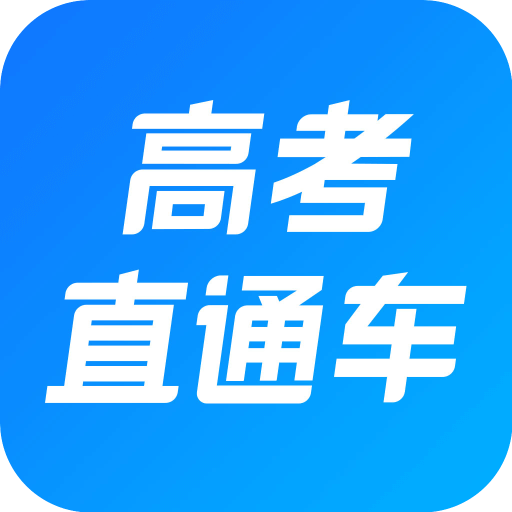2022高考一轮复习已经拉开帷幕,
小车定期精选干货陪你暑假自习~
快跟上小车的节奏,向理想大学冲鸭!
名词性从句知识点汇总
一、名词性从句的分类 名词性从句,包括四种从句,即主语从句、宾语从句、表语从句、同位语从句。因为主语、宾语、表语、同位语这四种成分均可以由名词构成,所以这四种从句在主句中都充当了名词的作用,故将这四种从句统称为名词性从句。如: 二、名词性从句的连接词分类 1.that(无含义,不充当成分) 2.whether,if(有“是否”的含义,但不充当成分) 3.连接代词:what, whatever, who, whoever, whom, whomever, whose, which, whichever.(在从句中做主语、宾语、表语和定语)连接副词:when, whenever, where, wherever, how, however, why (在从句中做状语) 4. as if,as though,because(不充当成分,在名词性从句中只引导表语从句) 三、连接词that在名词性从句中可以省略的三种情况 1.it 做形式主语,that引导主语从句时 It is said (that) he has been studying abroad. 据说他一直在国外学习。 2.动词宾语从句中 I think(that) you have much to improve in English.我认为你的英语需要提高的有很多。 3.形容词宾语从句中 I am afraid (that) I will be late.恐怕我要迟到了。 四、同位语从句和定语从句的区别 that作为关系代词,可以引导定语从句,充当句子成分,在从句中作宾语时可以省略;that引导同位语从句时,起连词的作用,没有实际意义,不充当句子成分,一般不能省略。 试比较下面两个例句: (1)I had no idea that you were here.我不知道你在这里。 that无含义,that you were here 指的就是idea,所以是同位语从句,不能省略that (2)Have you got the idea(that)this book gives you?这本书给了你想法吗? that指的是the idea,that引导定语从句,作宾语,可以省略 名词性从句如何考察 1.考查名词性从句的引导词,通常都是在无提示型的试题中,即试题只给出空格而不给提示词,让考生填入恰当的引导词。 例1·语法填空:I didn’t understand why this would happen and my credit card had already been charged for the reservation. 此题考查why引导的宾语从句。 例2·完形填空:But every day, we would sit by the lake, looking at the house and dreaming of what it would be like to live there. 此题考查what引导的宾语从句。 2.考查名词性从句的时态、语态,通常出现在语法填空和短文改错这两大题型中。 名词性从句解题三步骤 STEP 1:划分句子成分,找出名词性从句。 例6·语法填空:As natural (nature) architects, the Pueblo Indians figured out exactly thick the adobe walls needed to be to make the cycle work on most days.此句的主语是the Pueblo Indians,谓语动词是figured out, thick the adobe walls needed to be to make the cycle work on most days是一个宾语从句。 以例6为例。根据句意,此例中划分出的名词性从句的意思应该为:这些土坯墙需要很厚,才能保证这个热循环持久有效。把该名词性从句还原成一个原始的句子,“这些土坯墙需要有多厚”应该是一个特殊疑问句,即“How thick did the adobe walls need to be?” 名词性从句规律总结 要想写出正确的名词性从句,考生必须了解名词性从句的基本规则。 一、引导词 1.若原句是一个陈述句,则变名词性从句后的引导词为that。 2.若原句是一个一般疑问句,名词性从句后的引导词为if/ whether。值得考生注意的是,有些情况不能用if,只能用whether。比如说主语从句置于句首,介词后的宾语从句,宾语从句中有or not等。 二、时态 若主句是一般现在时,则名词性从句本身的时态不变;若主句是一般过去时,则名词性从句的时态变为相应的过去时态。 三、陈述句语序 名词性从句,必须使用陈述句语序。
1.That she will help me made us happy.(主语从句)
2.I can understand what he said.(宾语从句)
3.This is where I was born.(表语从句)
4.The fact that a heavy earthquake happened made me crazy.(同位語从句)
例3·短文改错:After looking at the toy for some time, he turned around and found where his parents were missing. 此句中,正确答案为:去掉where,或把where改为that。(that) his parents were missing是一个宾语从句。
例4·短文改错:Do you want to know why we move last week?此句中,正确答案为:把move改为moved。why we moved last week是一个宾语从句,当名词性从句的主句是一般现在时时,从句本身的时态不变。
例5·语法填空:He sold or exchanged some of the milk in the towns nearby for other food and made cheese and butter for the family with what was left (leave). 此句中,what was left是一个宾语从句,作介词with的宾语。因为主句是一般过去时,所以宾语从句也要用一般过去时。
STEP 2:根据句意,将STEP 1中划分出的名词性从句的意思翻译出来,并将其还原成一个原始的句子。该原始的句子可以是陈述句、一般疑问句、特殊疑问句。
STEP 3:根据名词性从句的规则(考虑引导词、时态、陈述句语序),写出一个正确的名词性从句。
仍然以例6为例。在STEP 2中,考生根据句子结构和句子意思,还原出了一个原始的句子——How thick did the adobe walls need to be,现在考生要根据名词性从句的基本规则(考虑引导词、时态、陈述句语序),写出一个正确的名词性从句:How thick the adobe walls needed to be。所以,例6空格的正确答案为“how”。
例7·短文改错:If you notice that when someone is missing or hurt, tell your teacher immediately. 此句中,正确的答案为:去掉when。因为宾语从句someone is missing or hurt是一个陈述句,所以此宾语从句的引导词为that。
例8·高考改编题:the delayed flight will take off depends much on the weather. 此题空格的正确答案为“whether”。the delayed flight will take off是一个主语从句,意思为:这趟延误的航班是否会起飞?该句是一个一般疑问句,变为主语从句后应该用if/whether来引导。又因为该主语从句置于句首,故只能用whether。
3.若原句是一个特殊疑问句,则名词性从句后的引导词为wh-特殊疑问词。
例9·完形填空:Your support is important to our work. What-ever you can do helps.在此句中,whatever引导一个主语从句。
例10·完形填空:When I handed him the gift card, saying he could use it for whatever his family might need, he burst into tears. 在此句中,whatever引導一个宾语从句。
例11·短文改错:This is which other students say. 此题的正确答案为:把which变为what。在此句中,what引导一个表语从句。
例12·短文改错:My uncle is the owner of a resta-urant close to that I live. 此题的正确答案为:把that变为where。在此句中,where引导一个宾语从句。
例13·短文改错:I thought that it is a good idea. It does not cost much, yet we can still learn a lot.此题的正确答案为:把thought改为think。在此句中,that引导的宾语从句是一般现在时,而主句却是一般过去时。因为主句的时态和从句的时态不一致,所以该句的时态肯定有问题。从句子所在的上下文来看,该句的主句应该使用一般现在时。
例14·短文改错改编题:Where do you suggest should I go?此题的正确答案为:去掉should。where should I go是一个宾语从句,做suggest的宾语,因为名词性从句要用陈述句语序,所以此句的正确说法为:Where do you suggest I (should) go?
名词性从句高频考点易混点拨 高频考点一:考查that与what的区别 在引导名词性从句时,从属连词that一般要注意三个"不": 1.不省略。当从属连词that引导的主语从句位于句首时,that不省略;that引导同位语从句时,一般不省略。 2.不作成分。that 在名词性从句中不作任何句子成分。 3.无实义。that 在名词性从句中没有实义。 在引导名词性从句时, what一般要注意一个"不",一个"有词义",一个"作成分": 1.不省略。what 引导名词性从句时,不省略。 2.有词义。what 引导名词性从句时,有词义。一般表示"……的东西/事情等",这一用法与that 的用法不一样。 3.作成分。what 在引导名词性从句时,在从句中充当成分。这一用法与that 的用法不一样。 例如:Nobody believed his reason for being absent from the class that he had to meet his uncle at the airport.该句中,that引导同位语从句,在句中不作任何成分,不能省略且无词义。What the teacher said had a good effect on the children. what引导主语从句,在句中有词义。 高频考点二:it放在句首,真正的主语是that从句 常用句型如下: ①It+系动词+n.+ that从句; ②It+系动词+adj.+ that从句; ③It+be+动词的过去分词形式(如said, reported, suggested等)+that从句; ④It+特殊动词(appear, seem, happen, matter, turn out, work out等)+that从句。 高频考点三:考查whether与if的区别 whether与if在作"是否"讲时,是可以互换的。但在有些情况下不能互换: 1.whether可以与or not 连用,构成whether…or not或者whether or not,但if没有这种用法。 例如:Whether they do it or not matters little to us.他们干还是不干,与我们关系不大。 2.如果宾语从句是否定结构,则用if,而不用whether。 例如:I do not care if he doesnt show up.他露面不露面我都不在乎。 3.介词后的宾语从句只能用whether引导。 例如:The teacher worried about whether he had hurt the girl is feelings.老师担心他是否伤害了女孩的感情。 4.引导表语从句和同位语从句时都用whether。 例如:The question is whether they can cooperate with us.问题是他们是否会与我们合作。 5.少数动词如discuss, doubt, leave, put后的宾语从句常用whether引导。 例如:They discussed whether they should close the shop.他们讨论了是否应该关掉商店。 6.whether后面可以接不定式短语,而if不能。 例如:We were wondering whether to go today or tomorrow.我们想知道今天走还是明天走。 7.为避免产生歧义,不用if,而用whether引导宾语从句。 例如:You should tell your mother whether you want to go with her for a holiday.你应该告诉你母亲你是否想和她一起度假。(若用if,则可能被理解为是条件状语从句:如果你想和你母亲一起度假,你就应当告诉她。) 高频考点四:考查名词性从句中的虚拟语气 1.在主语从句中, 下面的几种情况谓语动词通常用"should +动词原形",should可以省略。 ①"It is/was+形容词+that … "句型。常见的形容词有important, necessary, natural, strange, surprising等。 ②"It is/was+名词+that …"句型。常见的名词有pity, shame, advice, suggestion, proposal,requirement, request, desire, order等。 ③"It is/was+动词的过去分词+that…"句型。常见的动词有advise, order, propose, request, suggest, demand, require等。 2.在下列动词后的宾语从句中,谓语动词用"should+动词原形",should可以省略。 这类动词有: insist(坚持), urge(力劝), order(命令),command(命令), request(请求,要求), demand(要求),require(要求,需要),suggest(建议),advise(建议),propose(建议), recommend(建议, 推荐) 等。Snow: hail 下冰雹sleet 下雨雪snow 下雪snowflake 雪花blizzard 暴风雪Temperature : hot 热的warm 暖和的cool 凉爽的cold 寒冷的freezing 极冷的chilly 阴冷的 3.在含有advice, order, demand, proposal, requirement, suggestion等名词的表语从句和同位语从句中,谓语动词用"should+动词原形",should可以省略。 4.在wish后的宾语从句中: ①表示将来的愿望实现的可能性非常小时,宾语从句的谓语动词用情态动词should/could/would/might+动词原形。例如:We wish the friendship between the two countries would last forever. ②表示与现在事实相反的愿望时,宾语从句的谓语动词用一般过去时(be动词用were)。 例如:He always wishes he were a millionaire and owned a big house and a sports car. ③表示与过去事实相反的愿望时,宾语从句的谓语动词用过去完成时。 例如:How he wished he hadn,t wasted too much time on playing computer games while at school. 5.在would rather后的宾语从句中,从句谓语常用一般过去时表示与现在或将来事实相反的愿望,用过去完成时表示与过去事实相反的愿望。 备注:点击右上角,复制链接,即可将页面发给打印店打印哦!收藏即可随时随地查看!觉得有用,欢迎分享给更多同学!
点击领取 | 更多高考复习资料 ↓




